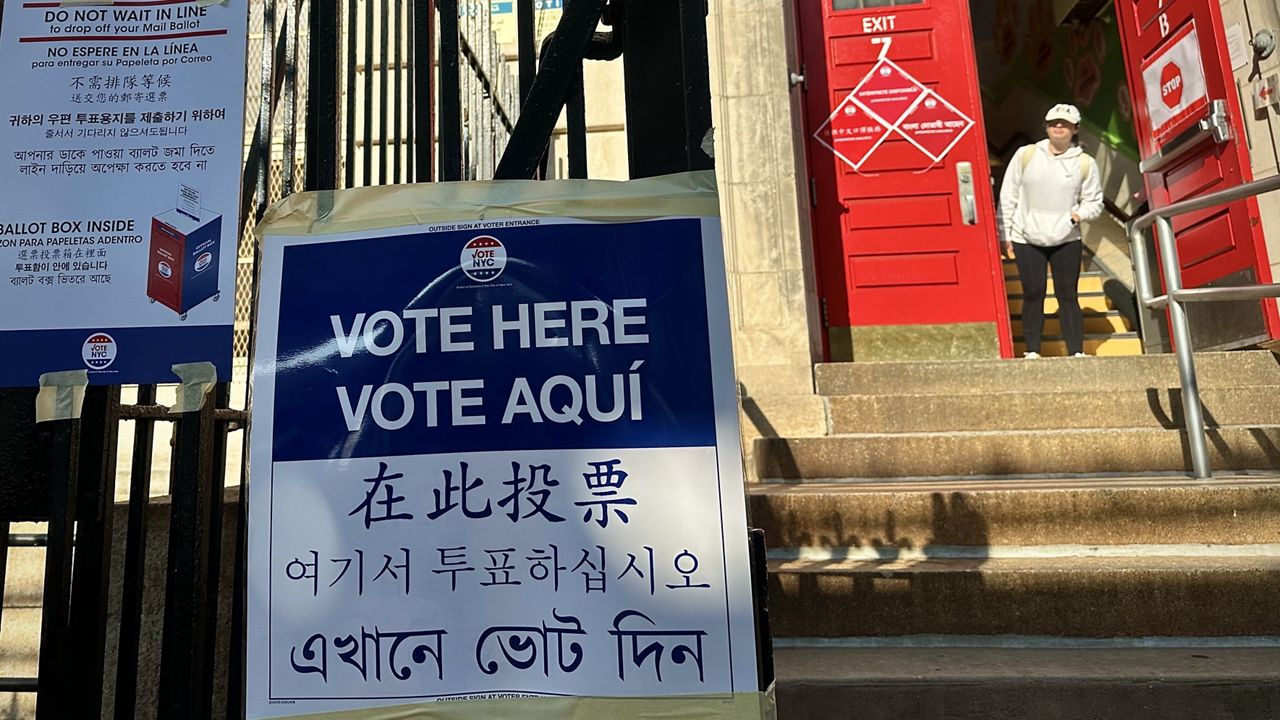When New York City voters head to the polls this November, they won’t just be deciding on candidates for city offices — they’ll also weigh in on five proposed changes to the city’s charter.
Most of the ballot measures deal with land use, housing approval processes or modernizing government systems. But one question could significantly shift the city’s election calendar by aligning local elections with presidential election years.
The Charter Revision Commission — a group tasked with reviewing and suggesting changes to the city’s governing document — voted to add the measures to the ballot earlier this week.
Here’s your guide to the five ballot initiatives of 2025.
Question 1: Fast-track affordable housing review processes
This proposal seeks to speed up the city’s approval processes for some affordable housing projects.
One measure would fast-track the public review process for certain projects within the 12 community districts that, according to a city report issued every five years, allow the least affordable housing. Community boards and borough presidents would still review the projects, but applicants would be able to bypass City Council review and go straight to the City Planning Commission.
A second measure would fast-track approval for some publicly financed affordable housing projects, allowing more of them to go to the city Board of Standards and Appeals for zoning relief, rather than going through the city’s land use review process, known as the Uniform Land Use Review Procedure, or ULURP. Local community boards would still review projects.
The proposed change “could be a powerful tool to promote affordable housing in neighborhoods where zoning poses insurmountable obstacles to affordable housing, and it could help the City move more quickly and efficiently in the places where it already builds,” a Charter Revision Commission report says.
A “yes” vote would fast-track the approval processes for some affordable housing projects. A “no” vote would keep the current processes in place.
Question 2: Simplify review of smaller housing and infrastructure proposals
This proposal aims to speed up and simplify the review process for small-scale housing and infrastructure projects.
The measure would create an Expedited Land Use Review Procedure (ELURP) — separate from ULURP — for many smaller projects, including “modest” housing projects that meet certain criteria.
The local community board and borough president would still have input, but their review periods would happen simultaneously rather than one after the other, and final approval would rest with the City Planning Commission instead of the City Council (except in cases where state law requires Council review or approval).
“From start to finish, ELURP would cut in half the amount of time that covered applications spend in public review,” the commission report says.
“By limiting opportunities for smaller projects, ULURP serves as a significant barrier to entry for smaller builders, nonprofit developers, and minority-and-women-owned business enterprises,” the report goes on to say.
A “yes” vote would simplify the review process and shorten timelines. A “no” vote would leave the existing process in place, with final approval by the City Council.
Question 3: Create an affordable housing appeals board
This measure would create a new appeals board — consisting of the mayor, the local borough president and the City Council speaker — that would review Council decisions that reject or change applications to create affordable housing.
Under the ULURP process, the mayor has the power to veto any actions the Council takes (though the Council can override the veto with a two-thirds majority vote). This proposal would eliminate the mayor’s veto power. Instead, the appeals board would be able to reverse Council decisions — if two of its three members agreed to do so.
“This change is intended to strike a better balance between local, boroughwide, and citywide voices in the land use process,” the report says. “ULURP would otherwise remain the same, from community board review through consideration by the Council.”
A “yes” vote would establish a three-member appeals board. A “no” vote would leave the existing ULURP process in place.
Question 4: Create a centralized digital city map
Currently, New York City’s official map — which includes street layouts and address assignments — exists in paper form across five separate borough offices.
This proposal would consolidate those into a single, digital map maintained by the Department of City Planning.
“Today, the City Map consists of five different sets, one for each borough, totaling over 8,000 individual paper maps,” the report says.
“The Commission heard testimony, including from practitioners and former Borough President staff, that this system can impose significant costs and time on infrastructure, housing, and other projects, and that consolidation is long overdue,” the report adds.
A “yes” vote would create a centralized mapping system. A “no” vote would maintain the current setup.
Question 5: Move city elections to presidential years
This measure would shift city elections, including mayoral and City Council primary and general races, to coincide with presidential election years, but only when state law permits it.
Even if the proposal passes, the change would require state legislative approval before it could take effect.
“Today, local elections in New York City are generally held on odd-numbered years, rather than even years when statewide or federal elections are held,” the report says.
“This reform is intended to improve voter turnout, make local democracy more inclusive, and save taxpayer money,” the report adds.
A “yes” vote would pave the way for aligning city elections with federal contests. A “no” vote would keep city elections in their current cycle.
